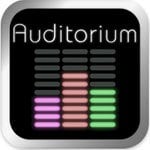- Wondering how to get Monopoly GO! free rolls? Well, you’ve come to the right place. In this guide, we provide you with a bunch of tips and tricks to get some free rolls for the hit new mobile game. We’ll …
Best Roblox Horror Games to Play Right Now – Updated Weekly
By Adele Wilson
Our Best Roblox Horror Games guide features the scariest and most creative experiences to play right now on the platform!The BEST Roblox Games of The Week – Games You Need To Play!
By Sho Roberts
Our feature shares our pick for the Best Roblox Games of the week! With our feature, we guarantee you'll find something new to play!Type Soul Clan Rarity Guide – All Legendary And Common Clans Listed!
By Nathan Ball
Wondering what your odds of rolling a particular Clan are? Wonder no more, with my handy Type Soul Clan Rarity guide.
Auditorium Review
For almost a year, Auditorium has swirled around the internet as a great Flash game that generated a lot of grassroots gamer buzz. The experience of manipulating light into sound that got millions of hits online is now a full-fledged release, coming to multiple platforms. The iPhone version of Auditorium looks and plays a treat, but you don’t quite get what you pay for.

For almost a year, Auditorium has swirled around the internet as a great flash game that generated a lot of grassroots gamer buzz. The experience of manipulating light into sound that got millions of hits online is now a full-fledged release, coming to multiple platforms. The iPhone version of Auditorium looks and plays a treat, but you don’t quite get what you pay for.
The premise is simple. A beam of light (called the “flow”) streams from a starting point, and your job is to guide the flow into boxes until all the lights in the box are illuminated. The boxes can be of different colors (or multiple colors), so the flow must be bent through areas that can change its color to match.
Using various items that the game gives you at the beginning of each level, you must use those tools to fill all the boxes, which in turn lets you hear the hypnotic music of the game. Arrows change the direction of the flow, or it can orbit an attractor, or even be be repelled in a completely different direction. By using an intuitive multitouch pinching motion, you can increase or decrease each item’s range and strength. After each level, the obstacles disappear, and you can see the stunning, multicolored flow you created during the level. It’s quite artistic.
As you progress, obstacles start getting in the way. You may find a splitter, which will slice your flow in two directions, for better or for worse. However, you will have to avoid the black hole, which devours the flow entirely.
While there is no formal tutorial, Auditorium is mostly about discovery. (If you are at all worried, there is an extensive Help screen with all the information about power-ups and obstacles.) The real selling point here is that there are always multiple solutions for every puzzle. In fact, you may not even need all the items the game provides to solve a level. The game has 15 acts, with five to seven levels within each act.
Or there would be if you buy everything.
The biggest knock against Auditorium is, unfortunately, a big one. While the game itself is wonderful, the description on iTunes is a bit misleading. “Purchase additional Movements [levels] for a great low price… Each new Movement features challenging acts, new colors and schemes.” What this doesn’t tell you is that you won’t actually encounter all the obstacles or challenges the truly full game will have to offer. These aren’t “additional.” These are the rest of the game. As such, I wasn’t able to ever see a black hole, deal with multicolored boxes, or a number of the items. It’s not that the full package is that expensive; each add-on costs 99 cents, and contains three additional acts. The problem is the initial download of five acts would give you the impression that you would be able to deal with every item and obstacle detailed in the Help page. In fact, you only get a third of what is the full title.
Perhaps it’s customer expectations. Perhaps the developer thought that charging five dollars for a full game would put people off from the typical 99 cents or $1.99 scheme. It’s a shame. The full five-dollar Auditorium experience is well worth the money, and even the five level initial game is worth downloading. But it’s hard not to feel bitter about getting a title piecemeal rather than a full, outright download. There is a “lite” demo version available, and you can even try it online for free in your browser. Going with the “flow” is a fabulous journey of discovery. It’s too bad you’ll be nickel-and-dimed along the way.

The good

The bad
More articles...
Monopoly GO! Free Rolls – Links For Free Dice
By Glen Fox
Wondering how to get Monopoly GO! free rolls? Well, you’ve come to the right place. In this guide, we provide you with a bunch of tips and tricks to get some free rolls for the hit new mobile game. We’ll …Best Roblox Horror Games to Play Right Now – Updated Weekly
By Adele Wilson
Our Best Roblox Horror Games guide features the scariest and most creative experiences to play right now on the platform!The BEST Roblox Games of The Week – Games You Need To Play!
By Sho Roberts
Our feature shares our pick for the Best Roblox Games of the week! With our feature, we guarantee you'll find something new to play!Type Soul Clan Rarity Guide – All Legendary And Common Clans Listed!
By Nathan Ball
Wondering what your odds of rolling a particular Clan are? Wonder no more, with my handy Type Soul Clan Rarity guide.







